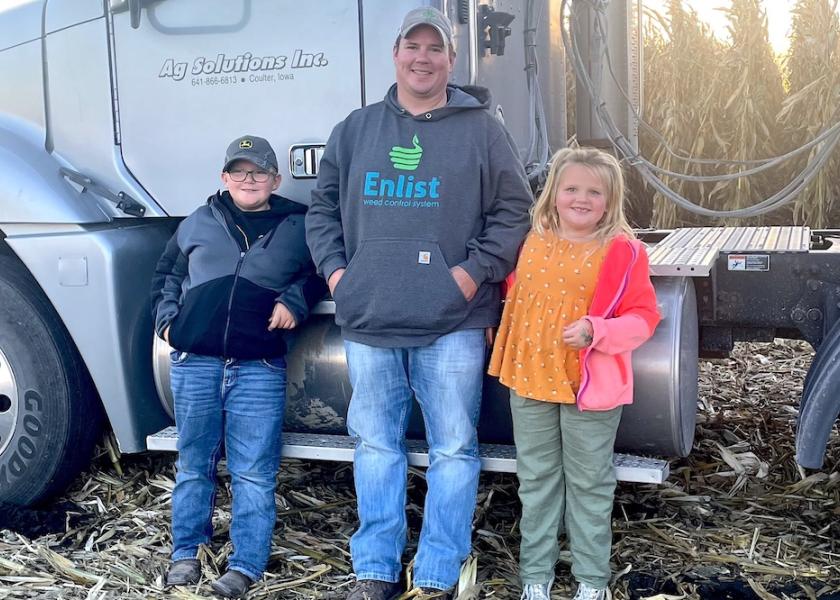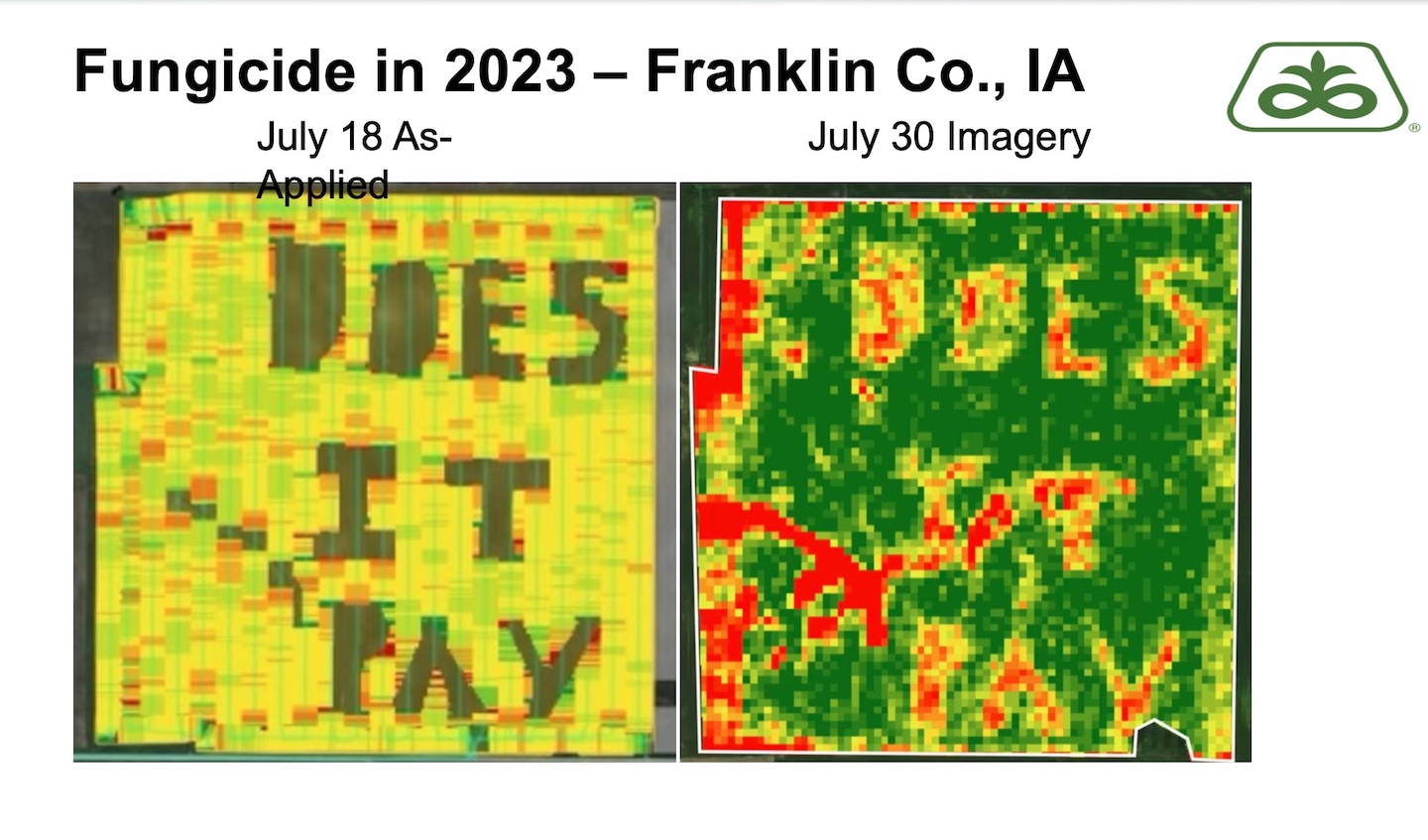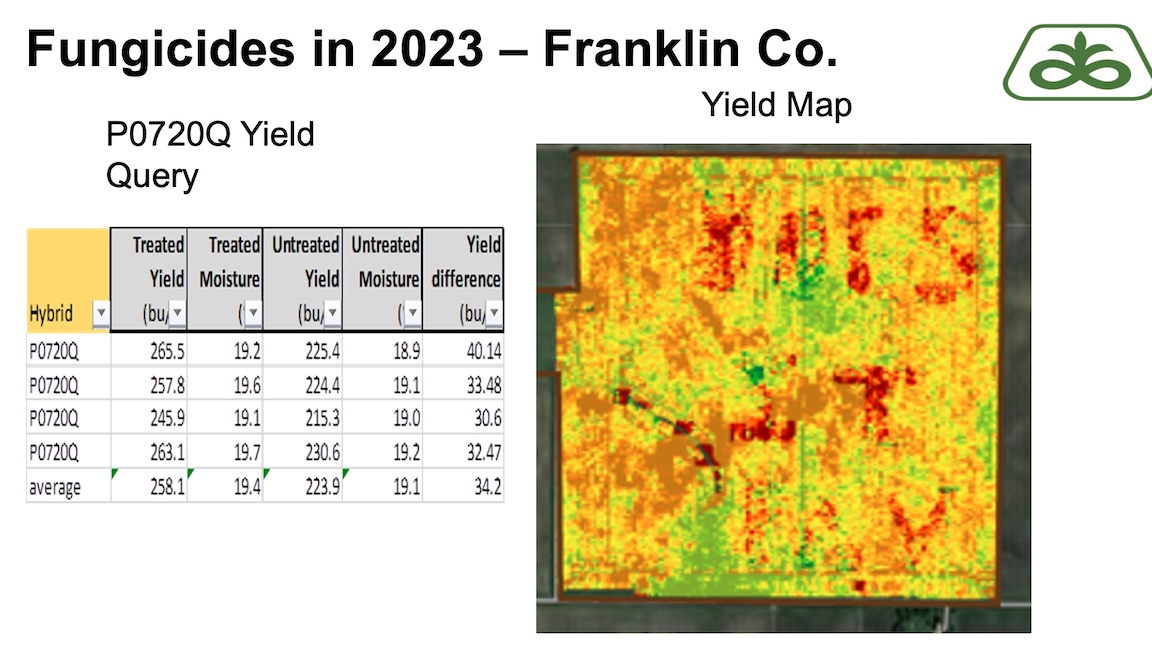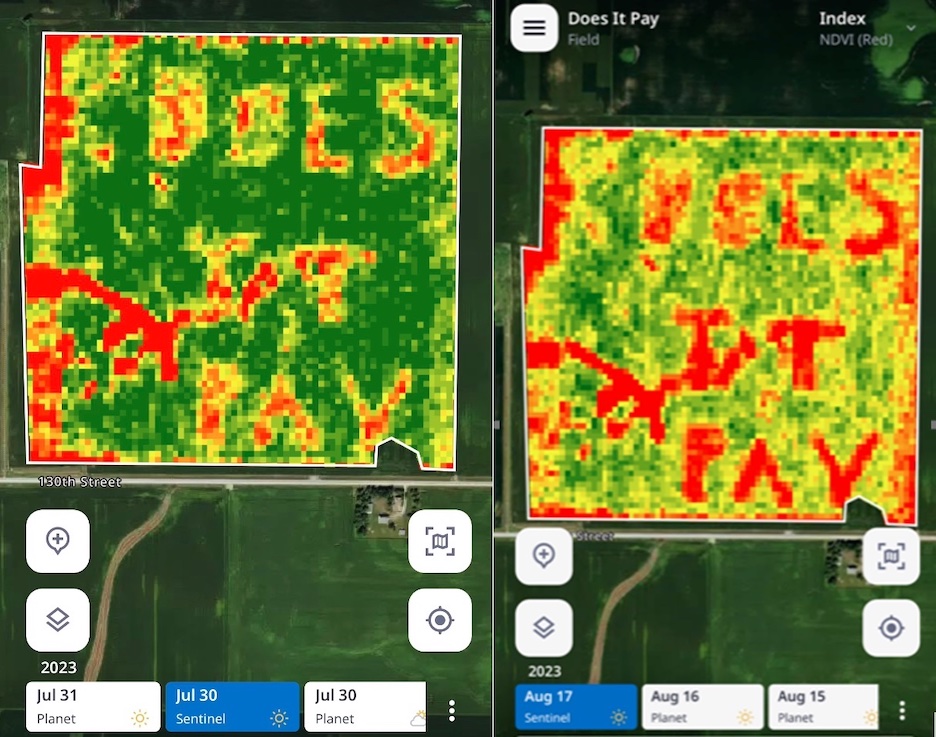Iowa Farmer’s Spell and Spray Corn Trial Rocks 25-Bushel Bump

How does an Iowa farmer spell corn yield? Ask Travis McCormick.
Welcome to spell-and-spray. In 2023, McCormick wrote DOES IT PAY across 25 acres of a 150-acre field to measure the benefit of fungicide application during drought.
What was the result of McCormick’s unusual trial? A booming 25-bushel difference between the untreated letters and the treated remaining block—a difference as stark as chalk and cheese.
“I’m not telling any farmer to spray fungicide and suddenly get a 25-bushel yield bump, but there’s no question this was very exciting,” McCormick explains. “I’m an open book on what we did and found: Judge for yourself.”
Telltale
A picture is worth a thousand words. “I wanted to try something different in 2023, something with a message that might stick out to our customers,” McCormick says. “Nothing is better than a physical picture.”
A third-generation producer, McCormick is part of a family-owned business, Ag Solutions, Inc. (The McCormicks are Pioneer sales reps, maintain a crop insurance business, and provide crop protection products via a partnership with Asmus Farm Supply.) In northcentral Iowa’s Franklin County, on relatively flat ground pocked with intermittent potholes, the family grows 1,100 acres of dryland corn on fields hit by substantial drought for three consecutive years.

“We’ve always had plenty of rain, but for several years, particularly in 2023, things have dried up, at least compared to what we’re used to getting,” McCormick describes.
“On a normal year we deal with dewy mornings. The plants stay wet for long periods of time that help bring in gray leaf spot, northern corn leaf blight, and now, tar spot, which we did not have last year, but it’s moving to our area. All of that means fungicides are crucial to the economics of crop production.”
McCormick responded with a telltale test: How much can a single fungicide application boost a corn crop under drought stress? He keyed into John Deere Operations Center and created a prescription via giant DOES IT PAY letters. “It took me about an hour to get it ready on the computer. I had solid expectations, but then again, nothing close to what developed around those three words.”
Big Reveal
On April 26, McCormick planted the 150-acre block with Pioneer P0720Q, a 107-day hybrid, at 35,000 seeds per acre. All treatments and management were identical across the field—except for fungicide applications.
Almost 90 days later, right before brown silk, and at a juncture intended to kill root worm beetles, McCormick sprayed Miravis Neo fungicide, along with an insecticide, applied with a Hagie ground rig on the field—except for the DOES IT PAY 25-acre cutout.
Out of the gate, DOES IT PAY popped out of the corn—the words clearly visible in satellite images. “Eight days,” he emphasizes. “Eight days after application we could already see the difference in NDVI photos. Normally, in a trial with test strips, we can’t see the NDVI difference until we’re into late August.”
“The outline of the letters was easy to read and I could see there was no center of my D and O, and that was because I made the holes too small for the sprayer to turn off.”
As McCormick awaited harvest’s big reveal, his questions mounted. “The overhead photos were so distinct that my expectations started to build. We didn’t have disease pressure on that field going in, and the Miravis Neo is a three-way fungicide that helps plant health. Therefore, I suspect the plant health boost was significant in what happened. No question, I was dang excited to roll the combine in.”
$82.50
On Sept. 14, in a season when the 150-acre trial field received roughly 12.5” of rain (down from the usual ballpark of 25”), McCormick cut the field for the tale-of-tape totals. The overall field averaged 242 bushels per acre. The treated portion yielded 244 bpa and the untreated portion (DOES IT PAY) tallied 219 bpa—a 25-bushel gap.
The fungicide application cost $10.50 per acre. The fungicide product cost $20 per acre. “We spent about $30 per acre on the fungicide process, and it turned things around so that we made $82.50 per acre on that ground,” McCormick notes.

“I’m so curious as to why this is so high because it’s not normal. A fungicide application for us comes with an expectation of a 10- or 15-bushel bump. Our neighboring fields this year were close to a 10-bushel boost with our standard one application of fungicide. We’re always at one fungicide application across our farmland and have never gotten two applications to pay.”
“I want people to know all the details,” he adds. “Half of our operation is 15 miles north of the trial and we got about 2” less rain for the season up there. Our yields there were 30 bushels less overall and our regular fungicide trials there averaged up to 7-bushel increases. About 95% of my customers use fungicide, but I’ve still got lots of questions to be answered.”
Keep’em Rolling
What’s next for McCormick in 2024? He intends to repeat DOES IT PAY in a nearby field, and possibly in several customer fields. “It’s important to change things up and keep people’s attention,” he says. “I’ll switch up the fungicide brand and run it again.”

“I would like to try some biological trials as they seem to be getting lots of hype. Like everything else, I’ll see what happens on our farm before I make recommendations for anyone.”
“The big thing for me is to keep the questions rolling,” McCormick concludes. “I want people to look at my fungicide trial and question if it was fair. The questions are how we learn and get better.”
For more from Chris Bennett (cbennett@farmjournal.com or 662-592-1106), see:
Corn and Cocaine: Roger Reaves and the Most Incredible Farm Story Never Told
American Gothic: Farm Couple Nailed In Massive $9M Crop Insurance Fraud
Priceless Pistol Found After Decades Lost in Farmhouse Attic
Cottonmouth Farmer: The Insane Tale of a Buck-Wild Scheme to Corner the Snake Venom Market
Tractorcade: How an Epic Convoy and Legendary Farmer Army Shook Washington, D.C.







